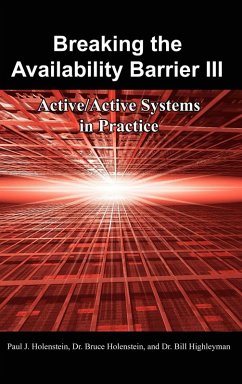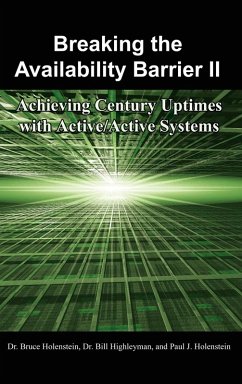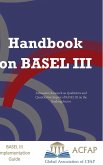Active/active architectures can extend failure times from years to centuries. Active/active systems comprise multiple independent nodes using a common distributed database cooperating in a common application. This book is the third volume of a three-part series on active/active systems. It gives real-life examples of existing active/active systems that are achieving such extraordinary failure intervals. As our daily lives and corporate well-being become more dependent upon computers, system reliability grows increasingly important. No longer are frequent system outages acceptable. Often, failure intervals must now be measured in centuries. In addition, the performance of these systems is analyzed; and a set of commercial off-the-shelf products are described that enable system implementations. There are many additional advantages of these multi-node architectures, such as unlimited scalability, load balancing, disaster tolerance, efficient use of all capacity, and risk-free failover testing. Also described are several other technologies related to high availability, such as the grid, virtual tape, and the Real Time Enterprise (RTE). There are many regulations being promulgated that require the use of high-availability computing. Many of these are summarized. Throughout this volume and the preceding two volumes, dozens of rules are formulated to achieve extreme availabilities. They are summarized here for handy reference.
Hinweis: Dieser Artikel kann nur an eine deutsche Lieferadresse ausgeliefert werden.
Hinweis: Dieser Artikel kann nur an eine deutsche Lieferadresse ausgeliefert werden.








